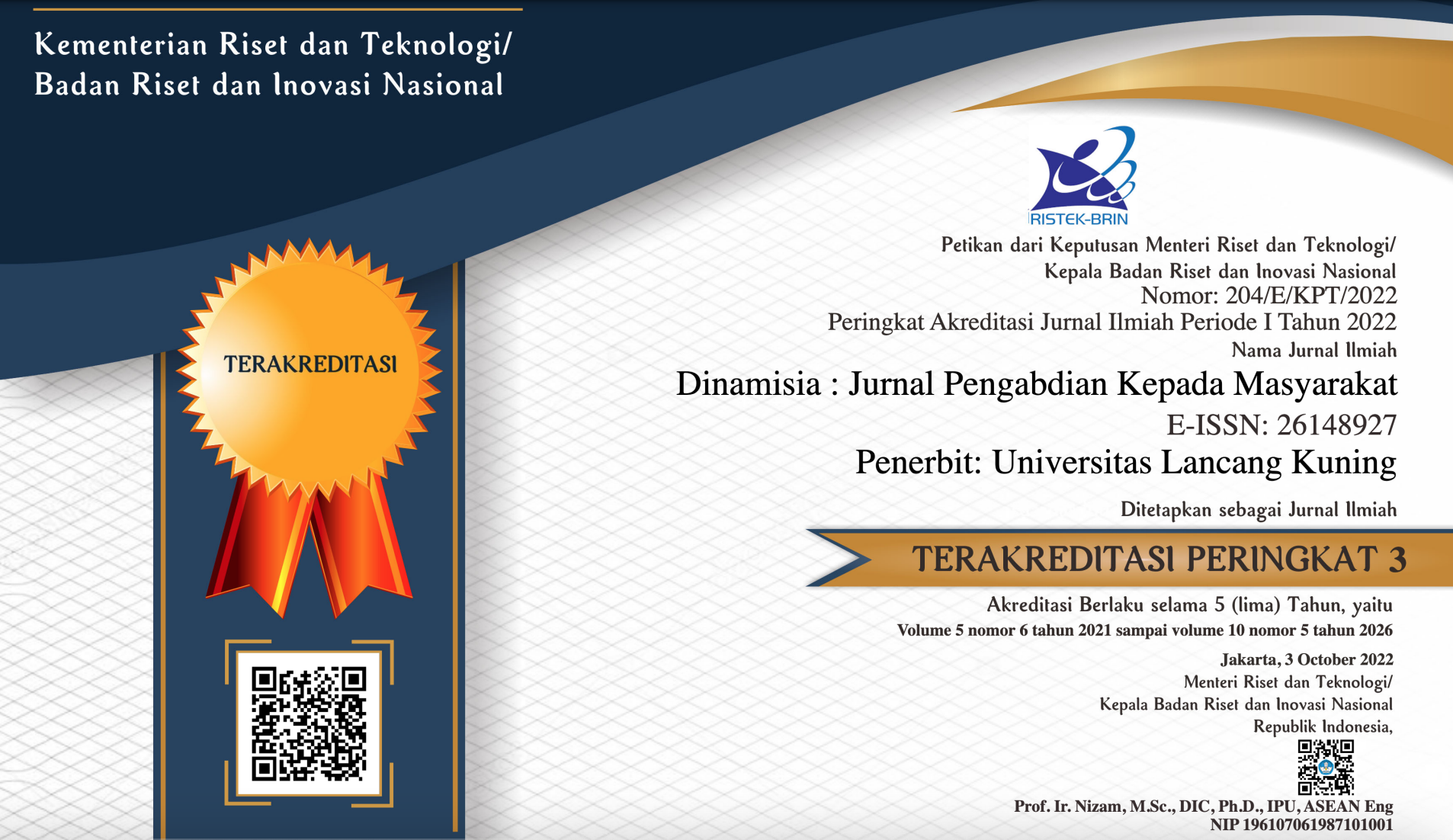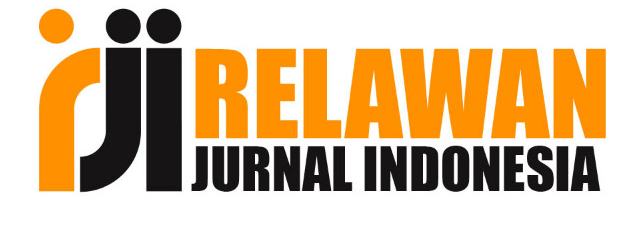Program Kemitraan Sekolah: Pemberdayaan Anak Usia Prasekolah Berbasis Terapi Komplementer Holtikultura
DOI:
https://doi.org/10.31849/dinamisia.v6i5.11561Keywords:
Preschool, Complementary, HorticulturalAbstract
Complementary horticultural therapy has the potential to improve gross motor skills in children. This therapy also provides hands-on experience and trains children's gross motor movements. Stimulated motor development in the form of movements of the hands, fingers, feet and limbs. The purpose is to carry out community service regarding the Implementation of Holticultural Complementary Therapy for Preschool Age Children at Nurul Ikhsan Integrated PAUD. The implementation method is carried out using Guided Training, FGD and Role Play techniques. The implementation of this community service activity was carried out for 2 days directly. The number of PAUD students involved in the activity was 32 people. Community Service Activities are carried out through 3 stages consisting of the preparation stage, implementation stage and evaluation stage. The results of community service activities show that the implementation of community service activities are carried out properly according to the plan. Evaluation of the results of the average value in the group given complementary horticultural therapy, namely pre-test 8.38 and post-test 11.06 and the average value in the group not given complementary horticultural therapy, namely pre-test 8.94 and post-test 9.06. These results can be concluded that there is an increase in gross motor skills in children.
References
Beela, C. K., & Reghunath, B. R. (2021). Horticultural therapy on self esteem and motor skills of physically challenged children. Physiotherapy and Occupational Therapy Journal, 3(April), 57–62.
Demers, M. (2013). Cultivating Well-being : Horticulture Programming ’ s Effect on Youth ’ s Emotional Well- being. St. Catherine University University of St. Thomas Master.
Flick, K. M. (2012). The application of a horticultural therapy program for preschool children with autism spectrum disorder. Journal of Therapeutic Horticulture, 32(1), 38–45.
Gustiana, A. D., Mawaddah, D. M., & Jayanti, D. T. (2019). Penerapan Kegiatan Berkebun Dalam Meningkatkan Keterampilan Proses Sains Anak Taman Kanak-Kanak. Cakrawala Dini, 10(2), 117–127.
Howart, Withnell, McQuarrie, & Smith. (2016). The Influence of Therapeutic Horticulture on Social Integration. Journal of Public Mental Health.
Ismail, L. (2017). Pengaruh Horticulture Therapy Terhadap Tingkat Agresi Narapidana: Sebuah Analisa Rasch Model. Journal of Dedicators Community, 1(1), 15–36. https://doi.org/10.34001/jdc.v1i1.435
Jasmeen, M. (2017). A Study onEffectiveness of Horticulture Therapy in Enhancement of Motor Skills, Socialization and Reduction of Problem Behavior in Adults with Multiple Disabilities. International Journal of Science and Research (IJSR), 6(4), 1278–1281. https://www.ijsr.net/archive/v6i4/ART20172586.pdf
Mardhiati, R. (2019). Guru PAUD: Pendidikan Perilaku Hidup Bersih Dan Sehat (PHBS) Anak Usia Dini. Ikra-Ith Abdimas, 2(3), 133–141.
Musviro, Rahmawati, P. M., Astuti, A., & Suhari. (2018). Terapi Holticultura Sebagai Terapi Komplementer Dalam Keperawatan: Lieteratur Review. Prosiding Seminar Nasional 1 St Annual Agricultural Health Nursing Seminar Faculty Of Nursing University of Jember, 3(3), 69–70.
Nurhayati, Y., & Suriani, W. (2022). Pelatihan Deteksi Dini Penyakit Kusta Pada Anak Kepada Guru Sekolah Dasar Di Wilayah Kerja Puskesmas Sanggeng Manokwari. Dinamisia : Jurnal Pengabdian Kepada Masyarakat, 6(4), 888–896. https://doi.org/10.31849/dinamisia.v6i4.10126
Putri, M. N., Astawa, N. G., & Utami, N. W. F. (2013). Perancangan Taman Terapi Hortikultura Bagi Penderita Gangguan Jiwa Pada Rumah Sakit Jiwa Provinsi Bali. E-Jurnal Agroekoteknologi Tropika (Journal of Tropical Agroecotechnology), 2(4), 233–243.
Ratnasari, T., Sujana, Y., Kom, S., Kom, M., Rahma, A., & Pudyaningtyas, S. (2018). Pengaruh Penerapan Kegiatan Berkebun Terhadap Perkembangan Fisik Motorik Anak. Kumara Cendekia, 6(2), 66–74.
Silitonga, A. N., Satiadarma, M. P., & Risnawaty, W. (2018). Penerapan Hortikultura Terapi Untuk Meningkatkan Self-Efficacy Pada Lansia. Jurnal Muara Ilmu Sosial, Humaniora, Dan Seni, 1(2), 399. https://doi.org/10.24912/jmishumsen.v1i2.928
Sommerfeld, A., McFarland, A., Waliczek, T. M., & Zajicek, J. (2021). Use of gardening programs as an intervention to increase children’s visual-motor integration. HortTechnology, 31(5), 589–594. https://doi.org/10.21273/HORTTECH04887-21
Widyatuti, W. (2008). Terapi Komplementer Dalam Keperawatan. Jurnal Keperawatan Indonesia, 12(1), 53–57. https://doi.org/10.7454/jki.v12i1.200
Wiedman-Rouse, T. (2017). Horticultural Activities Presented To Preschool-Aged Children In An Inclusive Setting And The Influences Of The Activities On Peer Interaction And Task Engagement. Hong Kong Journal of Occupational Therapy, 20(2), 0–1.



















